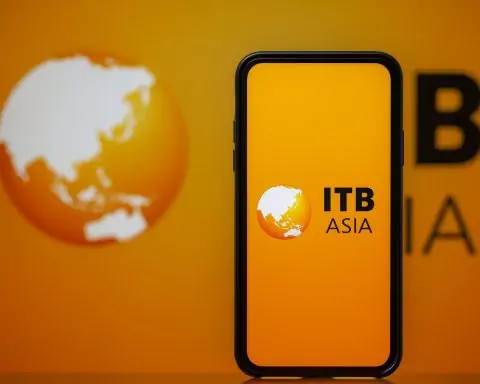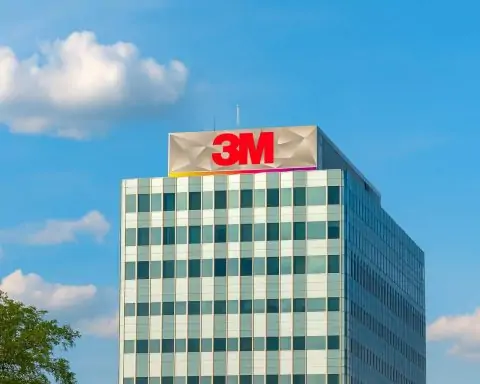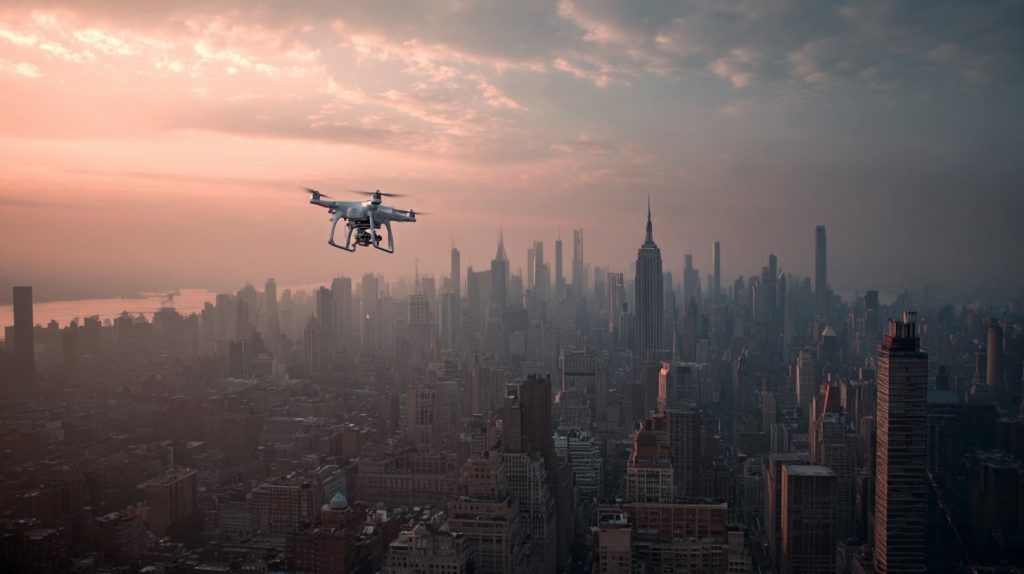- In 2024 Prozorro concluded over 3.2 million public contracts totaling about 888 billion UAH, and in the first four months of 2025 it handled about 1.2 million contracts worth 444.4 billion UAH.
- As of 2024, Prozorro connects 10 authorized e-procurement platforms plus 2 platforms for observation/auction, with Zakupivli.Pro (Prom.ua) handling about 50% of tenders, DerzhZakupivli Online about 25%, E-Tender about 14%, and SmartTender about 7%.
- Prozorro.Sale complements public tenders by handling privatization auctions and state asset sales, with E-Tender functioning as a Prozorro.Sale marketplace.
- Private tenders are voluntary but common, with large firms like Naftogaz and DTEK issuing RFPs and donor notices from UNHCR and the U.S. Embassy.
- Bidders register on accredited Prozorro platforms, foreign companies can register via their country registry, EU Qualified Electronic Signatures are accepted, and English-language notices are posted for high-value tenders (rough thresholds: goods/services about EUR 133,000; works about EUR 5.15 million).
- Typical bid documentation includes registration proof, qualifications, and tax/compliance certificates; bid security generally ranges 0.5–3% of contract value; Prozorro enforces a 24-hour bid correction window and an open reverse auction with up to three rounds, though three rounds were optional during martial law.
- Public payments flow via the State Treasury; advances up to 30% are allowed with a bank guarantee; typical payments for goods are within 30 days, and the performance security generally caps at 5% (3% for some goods/services).
- The Kyiv Metro Extension (Vynohradar) was awarded in August 2024 to Avtostrada Group for about 13.785 billion UAH, with a 30-month timeline and the winner starting work without an advance payment.
- The Dniester PSP Hydropower Plant Expansion phase 2 was tendered via Prozorro with an estimated value above 4 billion UAH.
- Draft Law No. 11520 (submitted August 23, 2024) seeks EU-aligned procurement reform, including higher thresholds, mandatory Prozorro Market e-catalog, new EU-style procedures such as Dynamic Purchasing Systems, non-price criteria weighting, and fully electronic contracts.
Overview: Ukraine’s tendering landscape in 2025 is defined by a robust public e-procurement system and a growing number of procurement opportunities driven by reconstruction needs. Both public and private tenders are active, with the Prozorro electronic platform at the heart of public procurement reforms. In 2024 alone, over 3.2 million public contracts were concluded via Prozorro (totaling ~UAH 888 billion), and the first four months of 2025 saw 1.2 million contracts worth UAH 444.4 billion – a clear indicator of expanding procurement scale [1]. This report provides a comprehensive look at Ukraine’s tender system in 2025, covering the main platforms (like Prozorro), participation requirements, typical contract terms, payment and guarantees, notable recent tenders, regulatory updates, and the key challenges and opportunities for bidders.
Public Procurement Platforms in Ukraine
Prozorro E-Procurement System: Ukraine’s public tenders are conducted through the Prozorro electronic procurement system, which is internationally recognized for its transparency and efficiency. Prozorro operates as a central database with a network of accredited electronic marketplaces [2]. Instead of a single government tender portal, multiple private e-platforms connect to Prozorro, enabling broad access to tender information. As of 2024, 10 authorized e-procurement platforms were integrated into Prozorro for conducting public tenders (with two additional platforms for observation/auction purposes) [3]. Procuring entities (government ministries, state agencies, utilities, etc.) publish tender notices and documentation on Prozorro via any of these accredited platforms, and bidders submit offers through the same.
Share of public tenders handled by major Prozorro platforms in 2024. Zakupivli.Pro (Prom.ua) hosted about 50% of procedures, followed by the state-run “Derzhzakupivli Online” (25%), E-Tender (14%), and SmartTender (7%), among others [4]. These competing e-marketplaces are all connected to the central Prozorro database, ensuring equal access and synchronized information.
Some of the key marketplaces in the Prozorro system include:
- Zakupivli.Pro (Prom.ua): A leading commercial marketplace that handled ~50% of public tenders in 2024 [5]. It’s known for a user-friendly interface and also offers modules for commercial (private) tenders.
- DerzhZakupivli Online (DZO): A government-affiliated platform (name translates to “Public Procurement Online”) accounting for ~25% of tenders [6]. It provides search and monitoring tools for all Prozorro procurements.
- E-Tender: Another large platform (about 14% of tenders) [7], accredited for all Prozorro procedures. E-Tender also assists with Prozorro.Sale auctions.
- SmartTender.biz: Initially a private tender platform, SmartTender is now an official Prozorro gateway (~7% of tenders) [8]. It still caters to commercial tenders outside Prozorro, making it popular for private companies running their own bidding competitions.
- Other Platforms: Smaller accredited sites like Public Bid, Newtend, PlayTender, etc., serve niche user bases [9]. All platforms publish identical tenders and results via Prozorro’s API, fostering competition among service providers without fragmenting the market.
Prozorro’s Transparency: One hallmark of Prozorro is that all tender information is open to the public by default. The central web portal (prozorro.gov.ua) and associated BI analytics module (bi.prozorro.org) allow anyone to search and download tender notices, documentation, contracts, and even view real-time auctions. This “Everyone Sees Everything” principle has earned Prozorro international accolades and helps businesses research opportunities and competitors [10] [11]. During the ongoing martial law (in effect due to the war), certain defense or security-related procurements have reduced disclosure, but the majority of non-classified tenders remain fully transparent for public oversight.
Prozorro.Sale Platform: In addition to procurement of goods, works, and services via Prozorro, Ukraine runs Prozorro.Sale, an allied system for transparent auctions of state assets and leases. Prozorro.Sale is used for privatization auctions, sale of licenses, leasing state property, etc., rather than typical purchase contracts. It operates similarly through accredited auction platforms. (For example, the E-Tender site is also a Prozorro.Sale marketplace [12].) While not a focus of this report, Prozorro.Sale complements public tenders by ensuring open bidding for asset sales, and many investors monitor it for privatization opportunities.
Private and Commercial Tenders
Outside the public sector, private companies in Ukraine also conduct tenders (competitive bidding) for their procurement needs, although these are not mandated by law to use Prozorro. Many large corporations, especially those with foreign investment or those aiming for transparency, utilize the same e-procurement platforms to run private tenders. For instance, SmartTender and Prom.ua’s Zakupivli.Pro allow businesses to announce commercial tenders to invite supplier bids in a controlled, online environment. This has made SmartTender.biz “the largest commercial procurement platform” in Ukraine [13], where companies can tender anything from construction services to office supplies.
Key points about private tenders in 2025:
- Voluntary but Common: Competitive procurement by private firms is voluntary. However, given the culture change Prozorro brought, many companies (including state-owned enterprises and municipalities for below-threshold purchases) adopted tender-like processes to ensure best value and mitigate corruption. It’s common to see private tenders especially in sectors like construction, development projects, or CSR-funded initiatives.
- Platforms and Visibility: Private tenders might be advertised on corporate websites or via tender bulletin portals. Some aggregators (like global tender websites) list both government and private tenders in Ukraine [14]. Because Prozorro has high traffic, using its connected platforms for private bids can attract more suppliers.
- Examples: Energy companies, such as Naftogaz or DTEK, often issue RFPs for equipment or services and may have their own supplier portals. Additionally, international organizations and NGOs operating in Ukraine (e.g. UN agencies, EBRD-funded projects) announce tenders – these follow their own rules but present another avenue of opportunities for businesses. For example, UNHCR and the U.S. Embassy regularly post procurement notices for goods and works in Ukraine [15] [16].
Emphasis: While this report emphasizes public procurement, businesses should monitor both Prozorro and major private tender platforms to capture the full range of opportunities in Ukraine’s recovering economy. Public tenders are typically larger and more structured, but private tenders can be significant in sectors like manufacturing, retail development, and donor-funded reconstruction projects.
Participation Requirements and Documentation
Participating in a Ukrainian tender – especially a public Prozorro tender – requires preparing certain documentation and adhering to formal procedures. Domestic and foreign bidders follow similar processes, with Ukraine’s procurement laws prohibiting any discrimination against foreign companies (except those linked to aggressor states) [17]. Below are the typical requirements and steps for tender participation:
- Registration on an E-Platform: Bidders must first register an account on one of the accredited Prozorro electronic platforms. Non-resident (foreign) companies can register by selecting their country and company registry from an integrated list – the system can often verify foreign business details automatically [18]. This streamlines creating an account for foreign bidders. A Ukrainian digital signature (EDS) is usually required to submit bids; however, Ukraine currently accepts EU Qualified Electronic Signatures as valid, and work is underway for mutual recognition [19]. (In practice, foreign bidders may submit without a local EDS and provide signed documents later if allowed [20] [21].)
- Tender Notice and Language: Public tender announcements are published in Ukrainian. For high-value tenders exceeding certain thresholds (approx. EUR 133,000 for goods/services, EUR 5.15 million for works), an English-language notice is also posted in the Prozorro system [22]. This English summary includes key details to attract international bidders, but the authoritative documentation is in Ukrainian. Bidders should be prepared to work with Ukrainian-language tender documents (with translations as needed).
- Tender Documentation: Each tender comes with a Tender Dossier or documentation package prepared by the procuring entity. This includes the technical specifications, project scope, contract terms, evaluation criteria, qualification requirements, and forms for bidders. All tender documentation is freely accessible online [23]. Bidders can ask clarification questions through Prozorro’s Q&A module (anonymously), and answers are posted for all to see. Any addenda or changes are also communicated via the system. Importantly, during martial law some procurements skip public tendering; but even negotiated contracts are often reported in Prozorro for record-keeping, with limited data if confidential.
- Required Bid Documents:There is no universal fixed list of documents for every tender – requirements vary by the nature of procurement [24]. However, commonly requested documents include:
- Identification and legal status – e.g. a copy of the company’s registration certificate or charter and an extract from the business registry (for a legal entity), or passport/ID for an individual entrepreneur [25].
- Evidence of qualifications – to show the bidder meets experience and capacity criteria. This can include prior project references or contracts, certificates of completion, resumes of key staff, technical certifications, licenses for regulated activities (energy, medicine, construction), proof of equipment or facilities, etc. [26]. For works tenders, a bill of quantities or cost estimate may be required in the bid. For example, a construction repair bid might mandate an itemized estimate file.
- Tender offer and pricing – a completed bid form or proposal detailing the offered price and confirming compliance with specs. In Prozorro, bidders enter their price into an electronic field (which is used for the online reverse auction) and often attach a commercial offer document with a detailed breakdown or technical proposal [27]. The bid typically also states delivery timelines or work schedules as required by the tender.
- Tax and legal compliance certificates – documents proving the company is in good standing. If the bidder is a VAT payer, a copy of the VAT registration certificate is commonly needed [28]. Companies may also need to provide a tax clearance or a letter stating they have no debts on taxes and social contributions.
- No Grounds for Exclusion – Ukraine follows EU-like exclusion grounds. Bidders usually must declare (and for a winner, later prove) they are not bankrupt or in liquidation, not convicted of corruption or fraud, not having officers with corruption records, and not owing significant taxes [29]. Often a signed self-declaration is submitted with the bid, and the winner will later provide official certificates (like no-criminal-record for directors, no tax debt from tax authority, etc.) before contract signing.
- Bid Security (Tender Guarantee) – Many large tenders require a bid bond or guarantee. This is typically a bank guarantee (or sometimes cash deposit) for a small percentage of the expected contract value, meant to ensure the bidder’s seriousness. For example, a tender might ask for a 0.5–3% bid security which is returned to all bidders except the winner, and returned to the winner upon contract signing. Tender guarantees are not mandatory by law for all tenders, but they are commonly requested in high-value or competitive procurements [30]. The tender notice will specify the required guarantee amount and format.
- Electronic Bid Submission: All bids are submitted electronically via the platform. Bidders fill out online forms for basic information (price, qualifications, etc.) and upload the required documents as PDF scans or electronic documents [31]. The bid must be submitted by the deadline indicated. Prozorro enforces the deadlines strictly: when the time is up, the system closes and no late bids are accepted or viewed. Bidders can edit or withdraw their bid before the deadline if needed.
- Auction and Evaluation: For open tenders, once the bidding period closes, Prozorro may conduct an online reverse auction. If at least two bidders submitted offers, the system schedules a live auction where bidders can see the current lowest price (anonymized) and have up to three rounds to lower their bid. This competitive auction is a hallmark of Prozorro’s design to achieve savings. (Notably, under martial law regulations, a three-round auction was temporarily optional – by default still used in >99% of cases – to speed up procurement [32].) After auction, the procuring entity evaluates the lowest-priced (or best-value) offer against the qualification criteria and tender requirements. They check all the bidder’s documents and may request corrections of minor errors (Ukraine introduced a 24-hour bid correction window for certain mistakes, which is now a permanent feature) [33] [34]. If the lowest bidder fails to qualify (e.g. missing documents), the next lowest is considered, and so on.
- Contract Award: The winner is issued a notice of intent to award, and after a short standstill period (10 days for open tenders), the contract can be signed. The signed contract must then be published in Prozorro along with all its attachments, making it public record. In 2025, the government is moving toward fully electronic contracts signed and stored on the platform [35]. Contracts can only be finalized on the terms of the winning bid and tender conditions – material deviations are not allowed. If a winner refuses to sign or fails to provide required post-bid documents (like a performance bond), they forfeit their bid security and the next bidder may be awarded.
Equal Access for Foreign Bidders: Ukraine is a party to the WTO Government Procurement Agreement (GPA) and has aligned many rules with EU procurement directives due to its EU Association Agreement. Foreign companies can bid on Ukrainian public tenders without special permits. The law explicitly bans discrimination against non-residents [36]. The only exclusions are companies tied to the Russian Federation or Belarus (by ownership or origin of goods) due to security sanctions [37]. In practice, foreign bidders should be prepared to submit legalized documents (with Ukrainian translations) if they win, and possibly to show Ukrainian certification for certain products (unless waived). The language barrier can be a challenge – engaging a local partner or representative to navigate procedures is common. Despite these hurdles, foreign participation is growing: in 2022, over 250 foreign companies from 46 countries took part in Ukrainian public procurements, with Polish companies winning the largest share of contracts (UAH 2.09 billion worth) [38].
Tip: If tender requirements seem unfairly tailored (a known issue where a tender might specify an overly specific standard or brand), bidders can challenge discriminatory terms. First, they may ask the procuring entity to clarify or amend the tender. If that fails, a formal complaint can be filed to the Antimonopoly Committee of Ukraine (AMCU)’s procurement complaints board. This independent body reviews disputes and can order changes or cancellation of tenders. The process is relatively fast (weeks) and inexpensive compared to court, providing a vital check on unfair requirements [39] [40]. International bidders are advised to use local legal counsel for such appeals, as Ukrainian procedure and language are involved.
Typical Terms and Conditions of Contracts
Contracts awarded through tenders in Ukraine must align with the terms set out in the tender documentation and the winning proposal. The government has standardized many conditions to protect public interest, though details vary by the type of procurement (goods, services, or works). Here are common terms and structures:
- Contract Form: Most public contracts are bilateral written agreements between the procuring entity (state or local authority, or state enterprise) and the supplier/contractor. Ukraine is moving toward standard contract templates: a 2024 draft law will empower the Cabinet of Ministers to approve standard forms for certain procurements, which would then be obligatory [41]. For now, many sectors use recommended templates (for example, construction contracts follow “General Conditions” approved by the Cabinet). Contracts typically reference the tender ID and are published on Prozorro for transparency.
- Scope and Specifications: The contract will include a detailed description of the goods, work, or services to be delivered, exactly as per the tender specification (and often incorporating by reference the supplier’s offer or technical proposal). No significant changes in scope or quality are allowed at signing – everything must match what was tendered and won.
- Price and Currency: Public contracts are usually priced in Ukrainian Hryvnia (UAH). The price is often fixed for the contract duration, especially for goods. However, in long-term contracts (e.g. multi-year construction), price adjustment clauses may be included to account for inflation or currency fluctuations. In late 2024, the government updated the General Terms for construction contracts: it removed the requirement that the contract price strictly equals the tender bid price for works, allowing price determination per approved cost-estimate norms [42]. This acknowledges that during execution (especially with war-time inflation and supply disruptions), some cost elements might need revision. Still, any price variation typically must fall within limits set by law (often a ±10% change is permitted through amendments for certain cases, like currency rate shifts or agreed scope changes).
- Structure of Payments: Payment terms are defined in the contract and are also entered into the Prozorro system for clarity [43]. Common structures include:
- For goods: payment after delivery and acceptance, within a set period (e.g. 30 calendar days is a typical payment term for budgetary entities). Sometimes partial payments are made for partial deliveries.
- For services: monthly or milestone-based payments upon submission of acts (service acceptance certificates).
- For works (construction): progress payments tied to completion stages or monthly execution certificates. Large construction contracts may have a schedule of values and pay against accomplished work volumes.
- Advance payments: Ukrainian public procurement traditionally limited advance payments. Currently, an advance (pre-payment) of up to 30% is permitted for some contracts if stipulated in the tender and backed by an advance payment guarantee from the contractor’s bank. Many construction contracts offer a 10-30% advance to help mobilize resources, but only upon receiving a bank guarantee of equal amount (to safeguard the client’s funds). If no advance is given, contractors must mobilize their own capital initially, as seen in the high-profile Kyiv metro project where the builder started work “without advance, at [its] own expense” [44] [45].
- Performance Security: To ensure contract fulfillment, winners of large tenders often must post a performance guarantee. Under current law, the performance security cannot exceed 5% of the contract value (or 3% for certain goods/services) [46]. It’s typically around 5% for works contracts and lower for simple purchases. This security is usually a bank guarantee valid until the end of contract (plus a warranty period, if applicable). A new draft law proposes allowing up to 10% for works contracts [47], but as of 2025 the 5% cap stands. The guarantee is returned to the contractor upon successful completion (or drawn by the client if the contractor defaults).
- Contract Duration and Timeline: The contract specifies the delivery or completion deadline. Delays can trigger penalties (fines for each day of delay) as per Ukraine’s civil law norms or specific contract clauses. If the project is complex (e.g. infrastructure works), interim deadlines might be set for stages. Under martial law, many reconstruction contracts are fast-tracked with ambitious timelines; however, if force majeure (like escalation of hostilities) prevents performance, contracts usually have clauses to handle that (suspension or extension).
- Warranty and Defects Liability: For works and goods, suppliers often must provide a warranty period during which they will repair defects at their cost. For building works, Ukrainian law often requires a minimum 3-year defects liability period (can be longer for critical infrastructure). Warranty retention money may be withheld or a separate post-completion guarantee may be required in some cases.
- Typical Conditions and Legal Clauses: Public contracts include standard clauses on: termination rights (e.g. if funding is lost or the contractor breaches), force majeure (often invoking the Ukrainian Chamber of Commerce certification if war conditions impede work), dispute resolution (usually Ukrainian courts, though some high-value deals with foreign parties might allow arbitration), and applicable law (Ukrainian law). They also reference the tender documentation as an integral part, meaning any conditions from the tender (such as liquidated damages rate, specific technical standards, etc.) carry into the contract.
- Framework Agreements: Ukraine also uses framework agreements in procurement. These allow a procuring entity (or group of entities) to select one or several winners for a certain product/service, and then order from them as needed over a period (usually up to 4 years), either by direct call-offs or mini-competitions. In 2024, Ukraine’s defense sector introduced a new variant of frameworks functioning as dynamic purchasing systems (DPS), where suppliers can qualify and join the framework continuously [48] [49]. For example, the Ministry of Defense used a DPS to procure unmanned aircraft systems, allowing any drone supplier meeting criteria to enroll and compete in ongoing mini-tenders – 226 such tenders worth nearly UAH 13.6 billion were run in 2024 via these systems [50]. This agile structure is becoming more common and may expand to civilian procurement for frequently needed goods.
- Terms of Delivery and Logistics: Contracts for goods typically specify delivery terms (Incoterms) and destinations. Since 2022, delivering goods in Ukraine can be challenging due to security concerns, so contracts clarify who bears risk during transit. For international bids, it’s common that the supplier must deliver to the end-user’s location in Ukraine (DAP or DDP terms). Customs clearance (if needed) and import duties may be the responsibility of the supplier unless otherwise stated, particularly if the supplier is foreign and the contract is donor-funded (some donor-funded imports are duty-exempt). Bidders factor these logistics into their prices.
- Payment Procedure Safeguards: Public entities in Ukraine pay through the State Treasury system. The Treasury will register the contract and only release payments that comply with the contract terms and budget allocations. Notably, a 2023 reform gave the State Audit Service power to suspend payments on contracts if serious violations are found (e.g. illegal direct award, contracting with banned suppliers, or paying for something not tendered) [51] [52]. This adds assurance that fraudulent contracts can be halted, but also means contractors must strictly adhere to procedures to avoid any payment delays.
In summary, public procurement contracts in Ukraine are formal and rule-based, with increasing alignment to EU standards. Suppliers should not expect ad-hoc changes or negotiations on core terms after bidding – the tender stage is where all terms are set. The upside of this rigidity is predictability: if you comply with the tender and perform, you will be paid as agreed (the government cannot arbitrarily alter the deal). We next look at examples of major tenders and how these terms play out in practice.
Notable High-Value Tenders (2024–2025)
Despite the challenges of war, Ukraine has continued to initiate and complete large-scale tenders, many aimed at rebuilding infrastructure and public services. Here we highlight some notable high-value tenders active or completed in 2025:
- Kyiv Metro Expansion (Vynohradar Line): One of the largest public contracts awarded recently is the continuation of Kyiv’s Syretsko-Pecherska metro line to the Vynohradar district. In mid-2024, Kyiv Metro (municipal enterprise) tendered this project with an estimated value of UAH 13.8 billion (~$340 million) [53]. The scope is to build two new underground stations (Mostytska and Prospekt Pravdy), a segment of track, and an additional depot. The tender concluded with Avtostrada Group, a major Ukrainian road and civil construction firm, as the winner – notably the only bidder, reflecting limited competition due to wartime risks [54] [55]. The contract was signed in August 2024 for UAH 13.785 billion [56], with a 30-month timeline. Under the terms, Avtostrada committed to start work without an advance payment, using its own capital, and to work around the clock to meet the deadline [57] [58]. This project is significant for Kyiv’s urban development and demonstrates that multi-hundred-million-dollar tenders are proceeding despite the conflict.
- Dniester PSP Hydropower Project: Another high-value tender involves Ukrhydroenergo, the state hydropower generating company, and the expansion of the Dniester Pumped Storage Power Plant. Phase two of this strategic energy project (adding additional hydroelectric units) was tendered via Prozorro. Although exact contract values are not widely publicized, industry reports indicate it is on the order of several billion UAH and was among the top tenders of 2024. Ukrhydroenergo, along with Ukrenergo (the electricity grid operator), have been among the largest tendering entities in 2024, commissioning projects for critical infrastructure protection and recovery [59]. These include repairing war-damaged power facilities, constructing new power lines, and installing protective structures around energy sites.
- Road and Bridge Reconstruction: Ukraine’s state road agency (Ukravtodor) and various regional authorities have tendered numerous large roadworks contracts under the “Big Construction” and war reconstruction programs. For example, the Agency for Restoration (a government body focused on rebuilding) in Mykolaiv, Odesa, Kharkiv, Dnipro and other regions issued tenders for major highway and bridge repairs in 2024. According to analysis, the largest construction procurements of 2024 included projects like: construction of a new metro bridge in Kyiv (UAH 2.0 billion), major highway reconstructions in Mykolaiv and Dnipropetrovsk regions (each around UAH 2–3 billion), and repairs of critical bridges and water infrastructure [60]. Many of these tenders were won by top domestic infrastructure firms (the Avtostrada Group mentioned above, Onur Group, Rostdorstroy, etc.), each securing contracts worth billions of hryvnia.
- Defense and Security Procurements: While most arms-related contracts are confidential, some public tenders address defense infrastructure. In 2024, about UAH 22 billion was spent via open tenders on defense-related construction – primarily building fortifications, fortifying bases, and procuring non-lethal equipment [61]. For instance, the Ministry of Defense used open framework agreements to buy items like drones, vehicles, and uniforms in bulk. Nearly 60% of the year’s defense procurement (by value) occurred in a single month (March 2024) when urgent needs were addressed [62]. One specific innovation was the launch of dynamic procurement systems for defense, enabling multiple suppliers to continuously bid for contracts such as UAV supply [63]. This resulted in swift contracting of locally-produced drone systems, illustrating how Ukraine leveraged competitive tenders to support its military with speed and transparency (within security limits).
- Social Infrastructure and Housing: A number of tenders have focused on rebuilding schools, hospitals, and housing destroyed or damaged by war. For example, the Ministry of Health in 2025 announced a high-value tender to rebuild parts of the Okhmatdyt Children’s Hospital in Kyiv – the expected cost was around UAH 367 million (about $9 million) [64]. International donors often co-fund such projects. Likewise, municipal governments in liberated areas (like the city of Kherson or towns in Kyiv region) tendered works to restore water supply systems, heating networks, and housing blocks. Many of these contracts range from tens to hundreds of millions of hryvnia. Although smaller than the mega-projects, they are vital for community recovery and present opportunities for construction and engineering firms.
- Public-Private Partnership (PPP) Projects: Ukraine is also reviving tenders for concessions and PPPs. Notably, seaports concessions that began before 2022 are expected to continue as conditions allow, and new highway PPP tenders (such as a potential toll road system mentioned in cooperation with Turkey) are on the horizon [65] [66]. In 2025, Ukrainian officials prepared dossiers of projects in areas like energy efficiency, social housing, and water supply for potential foreign investment and PPP, indicating future tender announcements in these spheres [67]. Legislative amendments in progress aim to streamline PPP procurement to align with EU best practices [68].
Table: Selected Major Tenders (2024–25)
| Project / Tender | Procuring Entity | Value | Status (2024–25) |
|---|---|---|---|
| Kyiv Metro Extension (2 stations + depot) | Kyiv Metro (City of Kyiv) | UAH 13.8 billion (≌ $340M) [69] | Contract awarded Aug 2024; in progress (due 2025–26). |
| Dniester PSP Hydro Plant Expansion (phase) | Ukrhydroenergo (State Hydro) | est. > UAH 4 billion | Bidding completed 2024; multi-year construction ongoing. |
| Mykolaiv Region Highway Reconstruction Package | State Agency for Restoration (Mykolaiv) | ~UAH 2–3 billion (each) | Multiple contracts awarded 2024 for road repairs (post-war rebuilding). |
| Kyiv “Podilsko-Voskresensky” Bridge completion | Kyiv City Administration | ~UAH 5 billion (multi-lot) | Retendered in 2023/24; work ongoing (major urban bridge). |
| Okhmatdyt Children’s Hospital Rebuild (phase) | Ministry of Health | UAH 367 million (≌ $9M) [70] | Tender in 2024–25 for contractors; donor-funded reconstruction. |
| Defense – Fortifications in Eastern Ukraine | Ministry of Defense / Engineers Corps | ~UAH 1 billion (various lots) | 2023–24 tenders for bunkers, trenches, barriers; ongoing execution. |
| Toll Road System & Customs Modernization (Planned) | Min. of Infrastructure / PPP | Not announced (n/a) | MoU with Turkey; tenders expected in 2025 [71]. |
Note: The above are illustrative examples. Many other significant tenders are underway, especially as Ukraine channels billions in donor funds to “build back better.” By the end of 2024, over 3.6 million procurement transactions had been conducted since the full-scale invasion began – three times the pre-war volume [72]. This surge reflects both urgent small purchases (e.g. for military and humanitarian needs) and large strategic projects. Businesses should watch official sources for announcements of upcoming high-value tenders, including the planned Ukraine Recovery programs which promise to bring internationally-financed projects to market.
Legal and Regulatory Updates in 2025
Ukraine’s public procurement framework is evolving quickly in response to both wartime exigencies and long-term reform goals (particularly EU accession requirements). Several legal updates and reforms are noteworthy for 2025:
- Martial Law Adjustments: Since 2022, public procurement has operated under special Cabinet of Ministers resolutions (notably Resolution No. 1178, 2023 and its amendments) that modify the standard law during martial law. These adjustments aimed to balance fast procurement for defense with transparency. In 2023–24, the government repeatedly tweaked these rules – for example, initially allowing very short bid periods and many direct contracts, then later extending minimum bid periods for complex tenders (by late 2024 the minimum for works tenders was increased from 7 to 14 days in response to concerns that 1 week was too short) [73] [74]. Some war-time provisions include permitting single-bidder auctions and a 24-hour error correction window (so bids aren’t thrown out for minor mistakes) – these have generally been positive and are expected to be codified into permanent law [75]. Certain procurements (especially related to energy network stability or military logistics) were temporarily allowed via direct contracting for speed [76], but the government is now reducing those exceptions as capacity for competitive tenders recovers.
- Draft New Public Procurement Law: A comprehensive new version of the Law “On Public Procurement” is in the legislative pipeline (submitted to Parliament as Draft Law No. 11520 on Aug 23, 2024) [77]. This draft law aims to align Ukrainian procurement with EU Directive 2014/24/EU and modernize several aspects. While still under debate in 2025, the proposed changes include significant updates:
- Higher Thresholds: The threshold for mandatory competitive bidding on purchases of goods/services would double from UAH 200k to UAH 400,000 (≈ €10,000) [78]. Procurements below that could be done via simplified methods or the electronic catalog. The threshold for works remains at UAH 1.5 million (≈ €38,000) for open tenders.
- Mandatory E-Catalog (Prozorro Market): For mid-range procurements (e.g. goods from UAH 50k up to 400k), the law would require using the Prozorro Market e-catalog when possible [79]. Prozorro Market is like an online store of pre-qualified suppliers; it became compulsory in 2023 for many common goods (like medicines over 50k UAH, food over 100k) [80]. The new law cements this and gives the Cabinet power to designate which items must go through catalogs [81].
- New Procedures: Introduction of EU-style procedures – Innovation partnerships, Competitive dialogue, Project contests, Joint (centralized) procurement, Dynamic Purchasing Systems, and Reserved contracts for social enterprises [82]. These expand beyond the current Open/Restricted/Negotiation toolkit. The law sketches these procedures, with detailed implementation to follow. Notably, it signals that the simple Open Tender may no longer be the default for everything, encouraging more flexible methods for complex needs.
- Non-Price Criteria: The draft removes the old rule that price must weigh at least 70% in evaluation. Procuring entities will have freedom to set quality and other criteria at higher weights [83]. This could improve value-based procurement (for example, factoring life-cycle cost, warranty, delivery time, etc.). However, it requires procurers to have capacity to define and evaluate such criteria fairly.
- Standard Contracts: As mentioned, the Cabinet would be empowered to issue mandatory standard contract templates for certain types of procurement [84]. This could, for instance, enforce FIDIC-based contracts in construction or standard service agreements for consulting, which in turn reduces legal ambiguity.
- Electronic Innovations: The law mandates fully electronic contracts and document flows, publication of court decisions that void procurement awards [85] [86], and clarifies that in any dispute between uploaded files and data entered in electronic fields, the e-field data prevails [87]. These steps further digitize and streamline Prozorro usage.
- Shorter Bidding Times: It formalizes the 7-day bidding period (instead of 15) for most tenders, as was practiced under martial law [88], though for works tenders the intent is to keep a longer period (15 days) recognizing their complexity [89].
- Variant Bids: Bidders may be allowed to submit alternative proposals (“variant bids”) if the tender allows it [90]. This is new and could encourage innovative solutions, though it raises questions on evaluation.
- Tougher Exclusions: Any bidder with even minority ownership by Russians, Belarusians, or Iranians would be barred (closing a loophole that allowed up to 10% in past) [91].
- Stronger Oversight: The State Audit Service (SAS) would have authority to monitor all procurements (including those below threshold that are just reported) [92]. SAS could also suspend contract payments if certain violations are identified (e.g. unapproved direct awards, dealing with banned suppliers, or contract terms not matching the tender) [93] [94]. Additionally, procurement officials (“authorized persons”) would be required to consent to sharing their personal data with auditors to enable penalties for wrongdoing [95].
- Appeals Process: The AMCU complaints procedure would slightly adjust – allowing not only the complainant and procurer but also the winning bidder to present their case in a dispute [96]. This ensures the awarded supplier can defend their bid if another participant challenges it.
- Concession and PPP Law Amendments: In parallel, Ukraine is updating its laws on public-private partnerships and concessions [99]. Amendments aim to remove bottlenecks and align with EU best practices, encouraging more private investment through transparent tendering of concessions (for ports, roads, utilities, etc.). This is part of the larger reform push to attract capital for rebuilding infrastructure that the state cannot fully fund. For example, Draft Law No. 12230 (Nov 2024) proposes more competitive processes for privatizing leased state assets, requiring auctions even when a tenant has a preemptive buy right [100] [101]. Clarity in PPP terms and risk-sharing will likely improve as these legal changes take effect, which in turn will create new tender opportunities for investors (domestic and foreign) to operate infrastructure in Ukraine.
- Localization Requirements: A significant policy introduced in 2022 is the local content (localization) requirement for certain machine-building procurements (like city buses, railway rolling stock, energy equipment). This law mandates a percentage of local content (starting around 10%, increasing over years) for a bid to be eligible, ostensibly to support Ukrainian manufacturers. However, because this conflicts with some of Ukraine’s international trade commitments, localized tenders do not apply when international agreements (like GPA or EIB/World Bank funding) are in play [102] [103]. In practice, localization has been cumbersome and, per Transparency International Ukraine’s analysis, ineffective: it added bureaucracy for local firms and has not markedly improved domestic industry [104]. In 2024, the government tightened documentation rules for localization (manufacturers must now submit more proof of local content or risk being blacklisted for 1–2 years) [105] [106]. This was meant to catch abuse of the system but ended up burdening bona fide producers. There is ongoing debate about canceling or reforming the localization regime to better align with EU standards and avoid deterring foreign bidders. As of 2025, companies bidding in affected categories should carefully follow the current localization certificate requirements or seek legal advice – and note that if a tender is funded by an IFI or falls under GPA thresholds, the localization rule might not be applied.
- Anti-Corruption Enforcement: Ukraine’s civil society (notably the DOZORRO community) and media are actively monitoring procurement. There have been important developments: the State Audit Service in 2024 adopted new risk indicators to automatically flag potentially problematic tenders (e.g. repeated cancellations, very short bid periods, frequent disqualifications of all but one bidder, etc.) [107] [108]. A dedicated risk analytics portal now shows tenders with red flags, and this has increased the share of audits initiated based on risk profiles. Moreover, law enforcement has pursued high-profile cases – for instance, in 2023 the head of Kyiv Metro was suspended and investigated for alleged corruption in procurement [109]. These steps indicate a tightening of oversight which, combined with digital transparency, makes it harder to rig tenders. Still, challenges remain: auditors often focus on formal compliance and sometimes conflict with the Economy Ministry on interpretations (as seen in confusion over a new rule to publish construction material prices in contracts) [110] [111]. Efforts continue in 2025 to refine procurement legislation to eliminate grey areas and strengthen the role of the AMCU and courts in addressing violations.
In summary, the regulatory trajectory in 2025 is toward EU integration and post-war rebuilding. Businesses can expect a modernized, albeit more complex, set of procurement rules soon – with higher thresholds (fewer tiny tenders) and more sophisticated methods for large projects. The government’s commitment to transparency and competitive processes is reinforced by these updates, which should give confidence to international investors and contractors eyeing the Ukrainian market.
Challenges and Opportunities for Bidders
The Ukrainian tender market in 2025 presents a unique mix of challenges and opportunities, especially for companies looking to participate in the country’s recovery and growth. Below we outline key considerations:
Challenges
- War and Security Risks: The ongoing conflict (though geographically focused in the east and south) poses risks to project execution. Infrastructure works might be disrupted by security incidents, and contractors face higher costs for insurance, security, and logistics. Some areas may be off-limits or require special permits for foreign personnel. These risks can also limit competition – many tenders have fewer bidders than normal (on average only ~1.5 bids per tender in 2023) [112], potentially because companies calculate the security premium. Bidders must carefully include contingency plans and possibly war-risk clauses in their approach.
- Frequent Regulatory Changes: As detailed, procurement rules have been amended frequently in 2022–2024 to adapt to martial law and reform needs [113]. This dynamic regulatory environment can be hard to navigate. Procedural nuances (e.g. which purchases require Prozorro Market, how to correctly publish price data files, which exceptions apply this month) may change with little notice. For non-resident bidders, staying compliant is challenging without local expertise. The learning curve is real, and mistakes in bid submission (wrong document format, missing a new form) can lead to disqualification. Engaging local procurement consultants or lawyers is often necessary to keep up with the latest requirements [114] [115].
- Language and Documentation: The working language of public tenders is Ukrainian. While large tenders provide an English summary, official docs and communication are in Ukrainian. All bids must effectively be prepared in Ukrainian (with certified translations of any original documents in other languages). This can be a barrier for some international firms. Additionally, bureaucratic paperwork (like notarized copies, stamps, etc.) is still a feature of many tenders, although electronic document use is improving. Ensuring all required docs (sometimes 20+ separate items) are prepared correctly is a substantial task.
- Financial and Currency Issues: Ukraine’s macroeconomic situation (currency fluctuations, inflation over 20% in 2022) can affect contract profitability. Public contracts in UAH may face cost increases – while the government has allowed some price indexation, it’s limited. Bidders carry the risk of currency exchange if their costs are in USD/EUR but payment in UAH. Additionally, payment delays can occur if state budgets are tight or if audits freeze disbursements. The metro project example shows contractors preparing for possible delayed payments by securing credit and using their capital [116]. Smaller suppliers might struggle with cashflow if payments are slow.
- Corruption and Unfair Practices: Although Prozorro has greatly reduced overt corruption, risks remain. There are instances of discriminatory tender requirements designed to favor an incumbent (for example, overly specific technical specs or an experience criterion that only one company can meet) [117]. While these can be challenged via AMCU, it’s a hassle and success isn’t guaranteed. There are also reports of occasional collusion among bidders (bid rotation or price fixing) and of some procuring entities informally negotiating with a preferred supplier then shaping the tender accordingly (a practice civil society watches closely). The government and NGOs like TI Ukraine are aware and actively highlighting such issues, but bidders – especially foreign ones – need to be cautious and do due diligence on partners and clients. It’s advisable to use the Prozorro BI tools to research a procuring entity’s past tenders for red flags (e.g. do they often cancel tenders without award? Do they always receive just one bid?).
- Administrative Burden: Participating in Ukrainian tenders can be administratively intensive. Collecting numerous certificates (which in Ukraine might require trips to various agencies unless you have Diia digital tools), obtaining bank guarantees from an approved bank, and submitting through unfamiliar IT systems can strain companies unfamiliar with it. For foreign companies, translating and legalizing documents (apostilles, notarization) adds time and cost. These hurdles can discourage participation, but with experience, many companies find the process manageable.
Opportunities
- Reconstruction Boom: Ukraine’s reconstruction needs are estimated in the hundreds of billions of dollars. Starting in 2023 and accelerating into 2025, substantial international funding (grants, loans) is being directed to rebuilding infrastructure, housing, energy systems, and industry. The government allocated $7.37 billion in 2025 to priority recovery projects with donor support [118]. This means a wave of large tenders in sectors like construction, engineering, energy, logistics, and public services. For example, projects to build new housing for displaced citizens, modernize hospitals, restore power grids, and construct roads and bridges are all being tendered. International firms with relevant expertise have a chance to enter a growing market – often these donor-funded tenders may follow international procurement rules (e.g. EBRD or World Bank guidelines) which can be more familiar to foreign bidders, while still being advertised in Ukraine. In short, the post-war rebuilding effort is a historic business opportunity, and competitive procurement will be the route to win these contracts.
- Prozorro’s Level Playing Field: The Prozorro system, by design, provides equal access to information and reduces corruption. This is an opportunity for new market entrants – you can discover tenders easily and don’t need personal connections to government insiders to compete. The open data allows you to analyze market prices, understand competitors, and identify upcoming procurement plans (since procuring entities publish annual plans). This transparency favors efficient and prepared companies. Moreover, Prozorro’s reputation for fairness can reassure foreign partners. Ukraine’s continued improvements (like moving to fully electronic contracts and integrated data) mean less bureaucracy and more clarity in the long run.
- EU Alignment and Market Integration: As Ukraine aligns its procurement laws with the EU, its market becomes more accessible to EU companies. The ban on Russian/Belarus business aside, Ukraine abides by the WTO GPA, so European and many other international bidders must be treated the same as locals. With the prospect of EU membership, Ukrainian procurement is adopting EU standards (environmental criteria, non-price factors, etc.) and will likely join systems like the EU’s TED (Tenders Electronic Daily) for broader publication. This integration provides Western companies a head start if they engage now, building partnerships and local experience. It also means Ukrainian companies will face more competition at home – prompting joint ventures and partnerships which can be mutually beneficial.
- Local Partner Networks: There’s a growing ecosystem of local contractors and suppliers eager to partner with international firms. Ukrainian construction companies, for instance, have capacity but may need foreign technology or capital; partnering in tenders (as consortia or subcontractors) can improve chances of winning large projects. The new law will even explicitly allow associations of business (consortia) to bid together [119]. For foreign companies, leveraging local know-how via partnerships can ease the documentation and regulatory challenges. Many local firms are keen to learn global best practices, and such collaborations can create strong bids that meet the tender requirements and deliver quality.
- High-Value Contracts and Profit Potential: Profit margins in Ukrainian public contracts can be fair, especially for efficient operators. With high competition, prices have been driven down in many commoditized tenders, but in specialized works or where supply is limited (e.g. sophisticated engineering, new technology, design services), bidders may find less competition and decent returns. Also, the government tends to favor lowest price (though this might change with non-price criteria) – a foreign firm that can optimize costs or leverage cheaper financing might outbid local competitors and still make a profit. As reconstruction scales up, some big contracts might be packaged in ways that only large international consortia can handle (e.g. an entire highway section or a power plant construction). Those will be marquee projects with reputational and financial rewards.
- Improved Procurement Environment: The concerted effort by Ukraine and its partners to improve procurement (training professional purchasing staff, introducing risk indicators, digital tools like Prozorro BI and DOZORRO for civic oversight) means the environment is continuously improving. Issues like unexplained cancellations, or buyers not signing contracts won by “unwanted” vendors, have decreased over time. The fact that the State Audit Service is now more proactive and required to guide procurers to fix issues (not just punish) [120] [121] is positive for bona fide bidders – there’s less chance of arbitrary outcomes. In essence, the playing field is becoming more regulated and fair. Companies that maintain high compliance and integrity stand to benefit from a market that rewards those attributes rather than political connections.
- Future Export and Expansion: Winning tenders in Ukraine could position companies for long-term involvement as the country’s economy rebuilds. For example, construction firms that help build roads now may find future private development deals in those regions. Suppliers who equip Ukrainian hospitals or schools might later service them or supply consumables. There is also the prospect of Ukraine as an EU market in the future – establishing a presence and track record now could open doors to not only Ukrainian public contracts but also partnerships in EU-wide projects.
In conclusion, Ukraine’s tender landscape in 2025 is one of high stakes and high rewards. Businesses must navigate war-related complexities and a fast-evolving legal framework, but those that do will find a transparent system hungry for quality goods, works, and services. With billions in aid and investment flowing through competitive procurement channels, Ukraine is set to be one of the most significant procurement markets in Europe in the coming years.
Prospective bidders – domestic and international – should stay informed, leverage the available tools (Prozorro datasets, platform analytics, legal updates), and approach the market with both diligence and ambition. The reforms underway signal that Ukraine is on track to EU-style procurement norms, and those who engage now will help shape and partake in the country’s reconstruction success.
Sources:
- Official Ministry of Economy of Ukraine news & reports on public procurement [122] [123]
- Prozorro.gov.ua and Prozorro Infobox materials (public procurement guidelines, stats) [124] [125]
- Transparency International Ukraine analyses and blogs [126] [127] [128]
- Law firm publications (Warwick Legal, Prikhodko & Partners) on Ukrainian procurement law [129] [130]
- Ukrainian media reports (Intent.press, NV) on tender statistics and notable projects [131] [132]
- United24 Media and other sources on international involvement in tenders [133] [134].
References
1. me.gov.ua, 2. www.warwicklegal.com, 3. intent.press, 4. intent.press, 5. intent.press, 6. intent.press, 7. intent.press, 8. intent.press, 9. intent.press, 10. www.warwicklegal.com, 11. www.warwicklegal.com, 12. oecd-opsi.org, 13. www.tradecommissioner.gc.ca, 14. www.biddetail.com, 15. www.unhcr.org, 16. www.ebrd.com, 17. www.warwicklegal.com, 18. www.warwicklegal.com, 19. www.warwicklegal.com, 20. www.warwicklegal.com, 21. www.warwicklegal.com, 22. www.warwicklegal.com, 23. www.warwicklegal.com, 24. prikhodko.com.ua, 25. prikhodko.com.ua, 26. prikhodko.com.ua, 27. www.warwicklegal.com, 28. prikhodko.com.ua, 29. prikhodko.com.ua, 30. www.tradecommissioner.gc.ca, 31. www.warwicklegal.com, 32. ti-ukraine.org, 33. ti-ukraine.org, 34. ti-ukraine.org, 35. ti-ukraine.org, 36. www.warwicklegal.com, 37. www.warwicklegal.com, 38. www.warwicklegal.com, 39. www.warwicklegal.com, 40. www.warwicklegal.com, 41. ti-ukraine.org, 42. uareconstruction.integrites.com, 43. infobox.prozorro.org, 44. english.nv.ua, 45. english.nv.ua, 46. faolex.fao.org, 47. ti-ukraine.org, 48. ti-ukraine.org, 49. ti-ukraine.org, 50. ti-ukraine.org, 51. ti-ukraine.org, 52. ti-ukraine.org, 53. english.nv.ua, 54. english.nv.ua, 55. english.nv.ua, 56. english.nv.ua, 57. english.nv.ua, 58. english.nv.ua, 59. ces.org.ua, 60. ces.org.ua, 61. ces.org.ua, 62. ces.org.ua, 63. ti-ukraine.org, 64. www.pravda.com.ua, 65. united24media.com, 66. united24media.com, 67. united24media.com, 68. me.gov.ua, 69. english.nv.ua, 70. www.pravda.com.ua, 71. united24media.com, 72. intent.press, 73. ti-ukraine.org, 74. ti-ukraine.org, 75. ti-ukraine.org, 76. ti-ukraine.org, 77. ti-ukraine.org, 78. ti-ukraine.org, 79. ti-ukraine.org, 80. ti-ukraine.org, 81. ti-ukraine.org, 82. ti-ukraine.org, 83. ti-ukraine.org, 84. ti-ukraine.org, 85. ti-ukraine.org, 86. ti-ukraine.org, 87. ti-ukraine.org, 88. ti-ukraine.org, 89. ti-ukraine.org, 90. ti-ukraine.org, 91. ti-ukraine.org, 92. ti-ukraine.org, 93. ti-ukraine.org, 94. ti-ukraine.org, 95. ti-ukraine.org, 96. ti-ukraine.org, 97. me.gov.ua, 98. me.gov.ua, 99. me.gov.ua, 100. uareconstruction.integrites.com, 101. uareconstruction.integrites.com, 102. ti-ukraine.org, 103. ti-ukraine.org, 104. ti-ukraine.org, 105. ti-ukraine.org, 106. ti-ukraine.org, 107. ti-ukraine.org, 108. ti-ukraine.org, 109. english.nv.ua, 110. ti-ukraine.org, 111. ti-ukraine.org, 112. www.open-contracting.org, 113. ti-ukraine.org, 114. www.warwicklegal.com, 115. www.warwicklegal.com, 116. english.nv.ua, 117. intent.press, 118. enlargement.ec.europa.eu, 119. ti-ukraine.org, 120. ti-ukraine.org, 121. ti-ukraine.org, 122. me.gov.ua, 123. me.gov.ua, 124. www.warwicklegal.com, 125. infobox.prozorro.org, 126. ti-ukraine.org, 127. ti-ukraine.org, 128. ti-ukraine.org, 129. www.warwicklegal.com, 130. prikhodko.com.ua, 131. intent.press, 132. english.nv.ua, 133. united24media.com, 134. united24media.com










